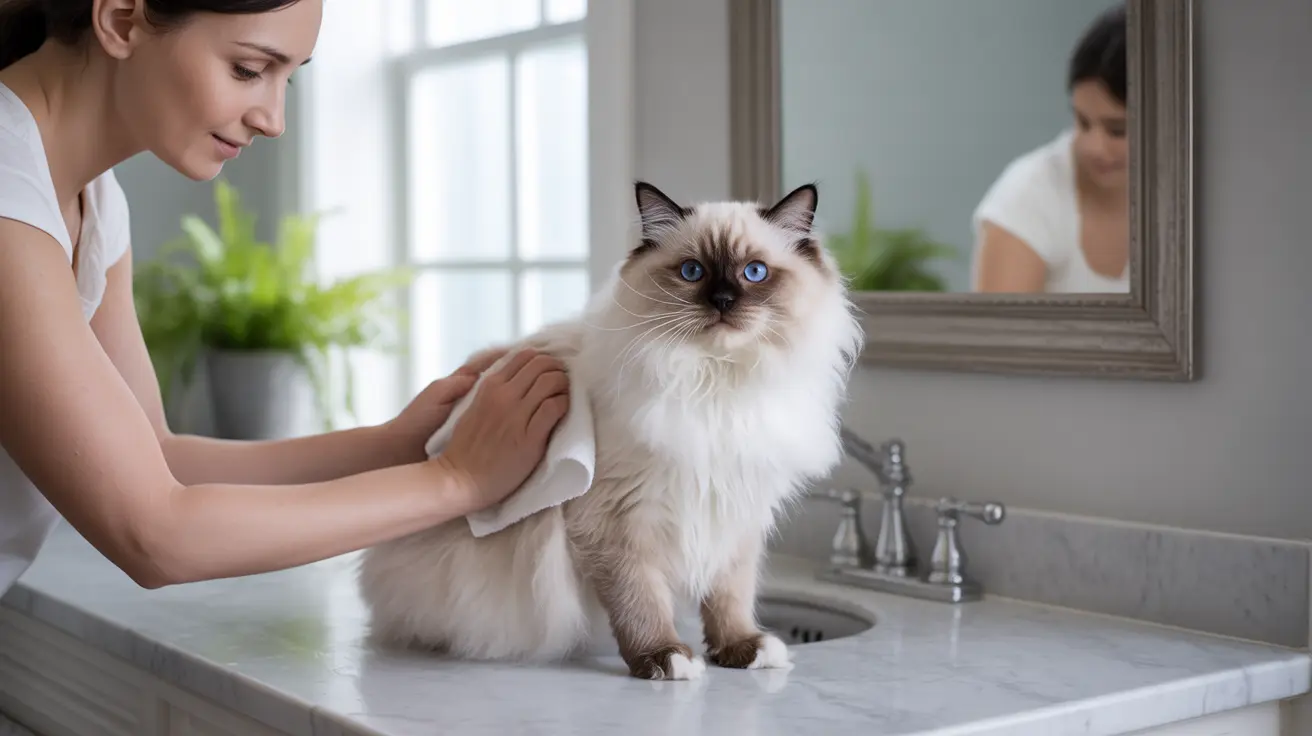Introduction
Learning how to clean your cat's bottom properly is an essential skill for any cat owner, even though most cats are excellent self-groomers. Whether you have a long-haired breed, an elderly cat, or a pet experiencing temporary health issues, there may be times when your feline friend needs assistance with hygiene. This comprehensive guide will walk you through the safe and effective methods of cleaning your cat's rear end while minimizing stress for both you and your pet.
Why Cats Sometimes Need Help with Bottom Cleaning
While cats are naturally meticulous groomers, several circumstances can prevent them from maintaining proper hygiene:
- Long-haired breeds prone to matted fur
- Obesity limiting flexibility
- Arthritis or joint problems
- Age-related mobility issues
- Illness or recovery from surgery
- Digestive problems causing messy stools
Essential Supplies for Safe Cleaning
Before beginning the cleaning process, gather these cat-safe supplies:
- Pet-specific wet wipes (unscented)
- Soft, clean washcloths
- Lukewarm water
- Clean towels
- Disposable gloves
- Pet-safe shampoo (if necessary)
- Blunt-ended scissors (for long-haired cats)
Step-by-Step Cleaning Process
Preparation
Create a calm environment and gather all supplies before starting. Put on disposable gloves and ensure good lighting in your work area.
Gentle Cleaning Technique
- Dampen a soft washcloth with lukewarm water
- Gently hold your cat in a comfortable position
- Clean from front to back using gentle strokes
- Pat the area dry with a clean towel
- Reward your cat with treats and praise
Preventive Measures and Maintenance
Regular preventive care can reduce the need for cleaning interventions:
- Schedule regular grooming for long-haired cats
- Maintain a healthy diet for proper stool consistency
- Keep litter boxes clean
- Monitor your cat's weight
- Address health issues promptly with your veterinarian
When to Seek Veterinary Care
Contact your veterinarian if you notice:
- Persistent diarrhea
- Blood in stool
- Excessive scooting
- Inflammation or swelling
- Strong, unusual odors
- Signs of pain during cleaning
Frequently Asked Questions
How can I safely clean my cat's anus at home without causing irritation?
Use pet-specific wipes or a soft cloth dampened with lukewarm water. Avoid human products, and clean gently from front to back. Never use harsh chemicals or rough materials that could irritate sensitive skin.
What are the signs that my cat's anal glands need veterinary attention?
Watch for excessive scooting, frequent licking of the area, swelling near the anus, or a strong, unpleasant odor. These symptoms indicate potential anal gland problems requiring professional veterinary care.
How often should I clean my cat's backside, especially if it's a long-haired or elderly cat?
Clean only when necessary - typically when you notice soiling or matting. Long-haired cats may need attention every few weeks, while elderly cats might require daily checks. Avoid over-cleaning as it can disrupt natural grooming behaviors.
What products are safe to use for cleaning a cat's rear end and which should I avoid?
Use pet-specific wipes, warm water with soft cloths, or veterinarian-approved cleaning products. Avoid human baby wipes, scented products, alcohol-based cleaners, and harsh soaps which can irritate your cat's sensitive skin.
How can I help a kitten learn to clean its own bottom properly?
Gently stimulate the area with a warm, damp cloth after meals and bathroom visits, mimicking a mother cat's grooming. This encourages natural cleaning behaviors. Most kittens learn self-grooming by 4-5 weeks of age.
Conclusion
Maintaining your cat's bottom hygiene is an important aspect of pet care that sometimes requires owner intervention. By following these guidelines and using gentle, patient approaches, you can help keep your cat clean and comfortable while strengthening your bond through positive handling experiences.






